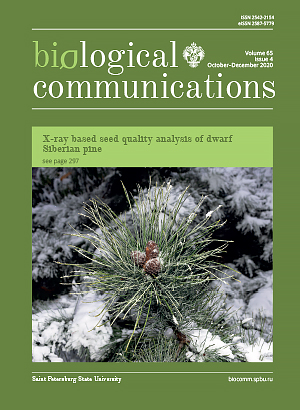Some biological traits of the parasitoid wasp Rhopalicus tutela (Hymenoptera: Pteromalidae) in spruce forests of Moscow Region, Russia
DOI:
https://doi.org/10.21638/spbu03.2020.404Abstract
Some biological traits of Rhopalicus tutela (Walker), a parasitoid of the European spruce bark beetle Ips typographus (L.), were studied both in forests of Moscow Region, Russia, and under laboratory conditions. Females of R. tutela have mature eggs after overwintering and thus do not need additional feeding to lay eggs. Under laboratory conditions at 8 °C, the life expectancy of males is 58±44 days and that of females is 36±45 days. An increase of temperature shortens the developmental period of R. tutela, which can proceed without diapause. The duration of one generation in the laboratory at 22–24 °C is 14–16 days. In spruce forests of Moscow Region, R. tutela has two or three generations per year.
Keywords:
Rhopalicus tutela, Ips typographus, parasitoid, biological trait, laboratory insect culture, biological protection, spruce forest
Downloads
References
Downloads
Published
How to Cite
License
Articles of Biological Communications are open access distributed under the terms of the License Agreement with Saint Petersburg State University, which permits to the authors unrestricted distribution and self-archiving free of charge.





